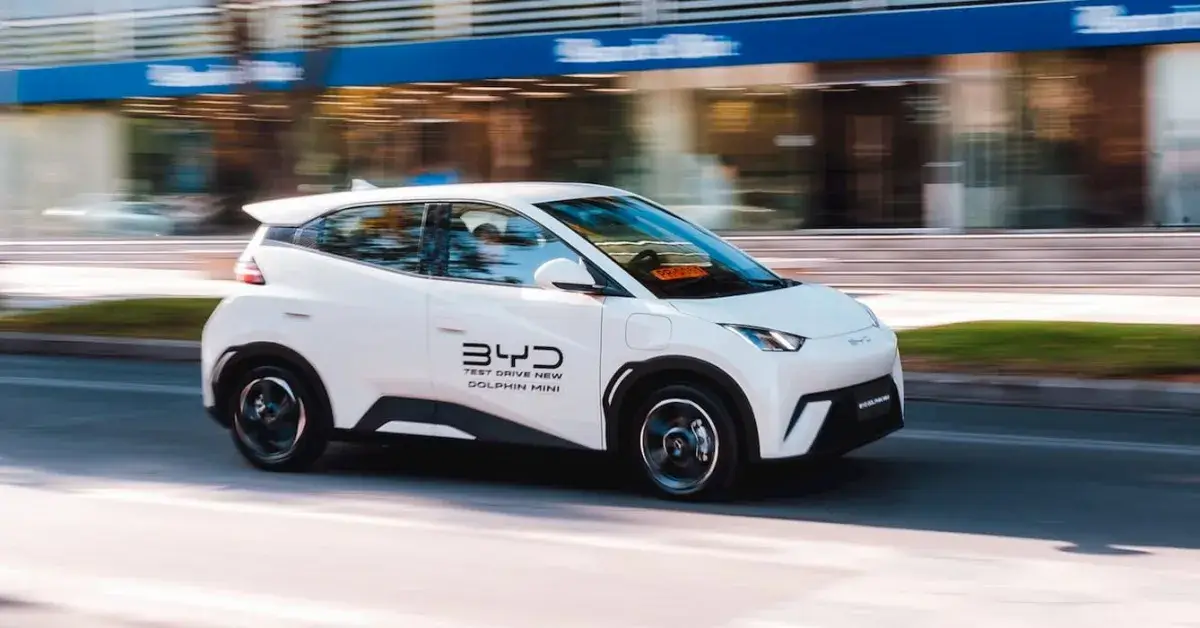
Editor:
As global supply chains face renewed uncertainty, China’s EV giants remain unfazed.
Their resilience stems from strategic diversification: early expansions into emerging markets like the Middle East, Southeast Asia, and Latin America have reduced reliance on the U.S. Now, Brazil — 18,000 km from China — has become their fiercest battleground.
Brazil, the world’s sixth-largest auto market, is seeing explosive EV growth. Data from the Brazilian Electric Vehicle Association (ABVE) shows sales of light electric vehicles surged 146% year-on-year to 80,000 units in the first half of 2024, with optimism for continued momentum.
Chinese brands are already ubiquitous. In São Paulo or Brasília, spotting a BYD is commonplace. “They’re even in smaller towns like Belo Horizonte and Goiânia,” notes Brazilian resident Pakozdy. “Many Uber drivers use BYD Dolphins.”
Beyond BYD, Chery(奇瑞), Changan(长安), Great Wall(长城), and JAC(江淮) are familiar names. JAC, notably, sells only 100% electric models in Brazil — a bold bet on the market’s potential.
Yet challenges loom beneath the surface. Labor disputes, sparse charging infrastructure, and supply chain gaps test these automakers, while Toyota and Volkswagen defend their turf. For Chinese brands, global expansion is never a smooth ride.
 BYD’s Dominance and the Localization Race
BYD’s Dominance and the Localization Race
BYD reigns supreme, claiming 61.2% of Brazil’s EV and hybrid market in 2024. “In Campinas, you see three to five BYDs per kilometer,” says Felipe, a hybrid owner.
Other Chinese players carve distinct niches: Chery partners with local giant CAOA Group, focusing on combustion and hybrid engines; JAC targets commercial EVs; newcomer Neta expands via dealers; Great Wall mirrors BYD’s push into family cars. “A year ago, spotting a Haval H6 hybrid was rare,” one driver recalls. “Now we see them daily.”
Policy tailwinds fuel this boom.
Brazil’s “Rota 2030” plan aims for 30% EV sales by 2030, while the newer “Mover” program offers $3.7 billion in tax incentives by 2028. Deepening China-Brazil ties — including a shared vision for a “golden fifty years” — further accelerate entry.
But Brazil isn’t handing out free passes. To boost local manufacturing, it imposed phased EV import tariffs, set to hit 35% by July 2026. Chinese passenger car exports to Brazil soared 372.4% in early 2024 — a pre-tariff rush — but have since cooled. Global rivals like GM and Stellantis are also investing, turning Brazil into an EV hotspot.
The Pricing Problem and Infrastructure Gap
The contrast is stark: sleek Chinese EVs share roads with aging gas guzzlers.
“For decades, Brazil got outdated models from Western brands,” observes Liao Mengcheng of Yingke Brazil. “Chinese EVs feel luxurious here.” Yet affordability remains a hurdle.
Lucia, a Brazilian resident, admires BYDs but balks at prices: “Even the cheapest model costs 115,000 reais ($14,800) — too steep when 90% of Brazilians earn under 3,500 reais ($450) monthly.”
“This deal simply doesn’t make sense. Up until 2021, 90% of Brazilians had a monthly income of less than 3,500 reais (about 4,500 yuan). In my opinion, when people say ‘many Brazilians like Chinese new energy vehicles’, it refers to the 10% who have the ability to start looking forward to purchasing or directly buying them,” Lucia admitted frankly.
Tariffs and taxes inflate costs; BYD’s Dolphin sells for double its China price. “Taxes are the biggest barrier to EV adoption,” warns Brazilian financial outlet Istoé Dinheiro.
Charging deserts compound the issue. ABVE reports just one charger per 17 EVs nationally — far below the EU’s 10:1 target. For road-trip-loving Brazilians, hours-long charging waits are “unthinkable.” Battery lifespan (~10 years) and resale fears also deter buyers.
Thus, hybrids dominate Chinese lineups. Leveraging Brazil’s ethanol tradition, BYD and Great Wall are testing ethanol hybrids — a pragmatic pivot as pure EVs won’t rule Brazil soon.
Localization Headaches and the “Collaborator” Imperative
Building local roots is fraught. BYD faced backlash late last year over alleged poor factory conditions. Though it denied claims of “slave-like” treatment, the episode highlighted cultural friction.
“Labor compliance isn’t just translating laws,” stresses Liao. “It’s understanding unwritten rules — like adequate worker facilities.” Tax codes, environmental norms, and politics demand caution too: “Penalties for missteps here dwarf those in China.”
Underlying tensions reflect Brazil’s industrial anxiety. Once a manufacturing powerhouse, it suffered deindustrialization since the 1980s. Now, locals fear foreign firms “stealing jobs” or “crushing homegrown players.”
Yet Chinese brands can position themselves as collaborators, not competitors. BYD aims to create 20,000 local jobs by 2026; Great Wall’s new factory pledges similar benefits.
“We’re not rivals with China anymore,” says Alexandre, a Brazilian consultant. “Half of us see Chinese firms as saviors now. Having a partner — not a hegemon — helps.”
For China’s automakers, Brazil is the gateway to South America. Their EVs already cruise streets from Chile to Colombia. The battle will be long, but the stakes — a continent’s electric future — are higher than ever.